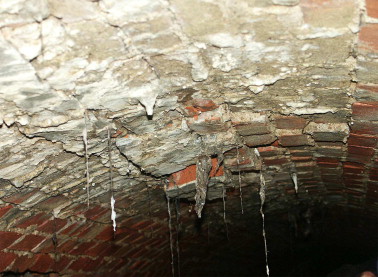
Potable water is also called drinking water. It can be treated and enriched from natural springs or community reservoirs. Most first world countries do not put much thought about where the water comes from when they turn on a faucet.
Adding ground-water to the sewer systems is called Inflow and Infiltration, also referred to as “I & I.” When soil becomes saturated it puts the soil under a lot of pressure from the combined weight. Any crack or opening in a sewer turns into the path of least resistance for water. Water can push through anywhere it can and eventually infiltrate the sewer pipe. I & I is present in every sewer system. This is also the reason sanitary sewer flows increase dramatically during heavy rains and/or spring snow melt, even in cities with separate storm sewer systems.
I & I sites can occur along a sewer pipe in many different places for different reasons. Poor lateral connections, joints in concrete or clay pipe, root intrusion sites, broken spots in the sewer, manhole chimneys that are cracked, aging brick and mortar manholes, manhole/sewer connections, etc. are all common sites for I & I. The most obvious is from water going underneath of a cast iron manhole cover.
I & I is a tremendous emerging problem since much of America’s infrastructure has lasted far past its reasonable life expectancy. Tons of tax-payer dollars are budgeted to modernize sewage treatment plants to handle excessive flows due to increasing I & I problems, most of which are untraceable. This is the driving force behind many of todays trenchless sewer rehab technologies, such as CIPP lining and point repair, chemical grouts, specialty epoxy coatings such as spray-on structural liners for rehabbing manholes, etc. It is also one of the major reasons why cities obtain CCTV camera pipe inspections of their lines on a regular basis as a preventative maintenance measure.
